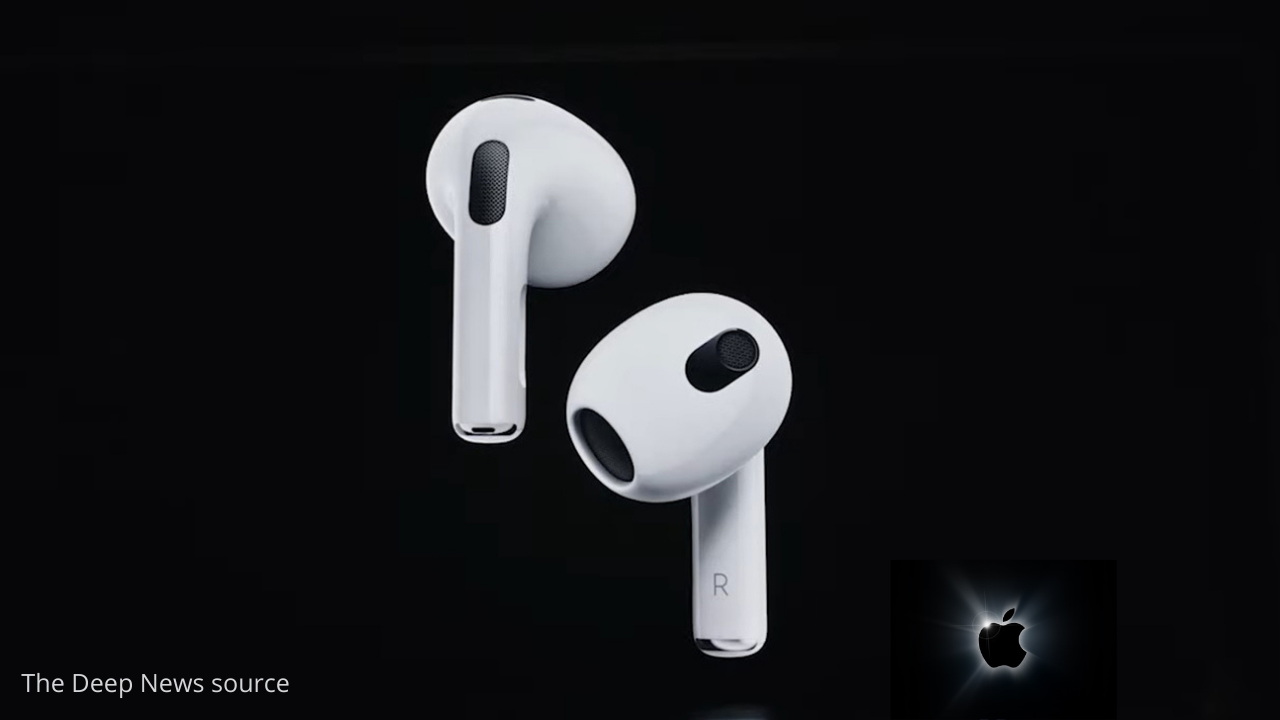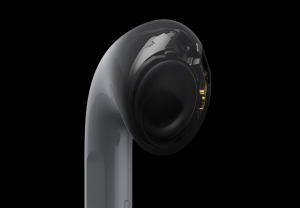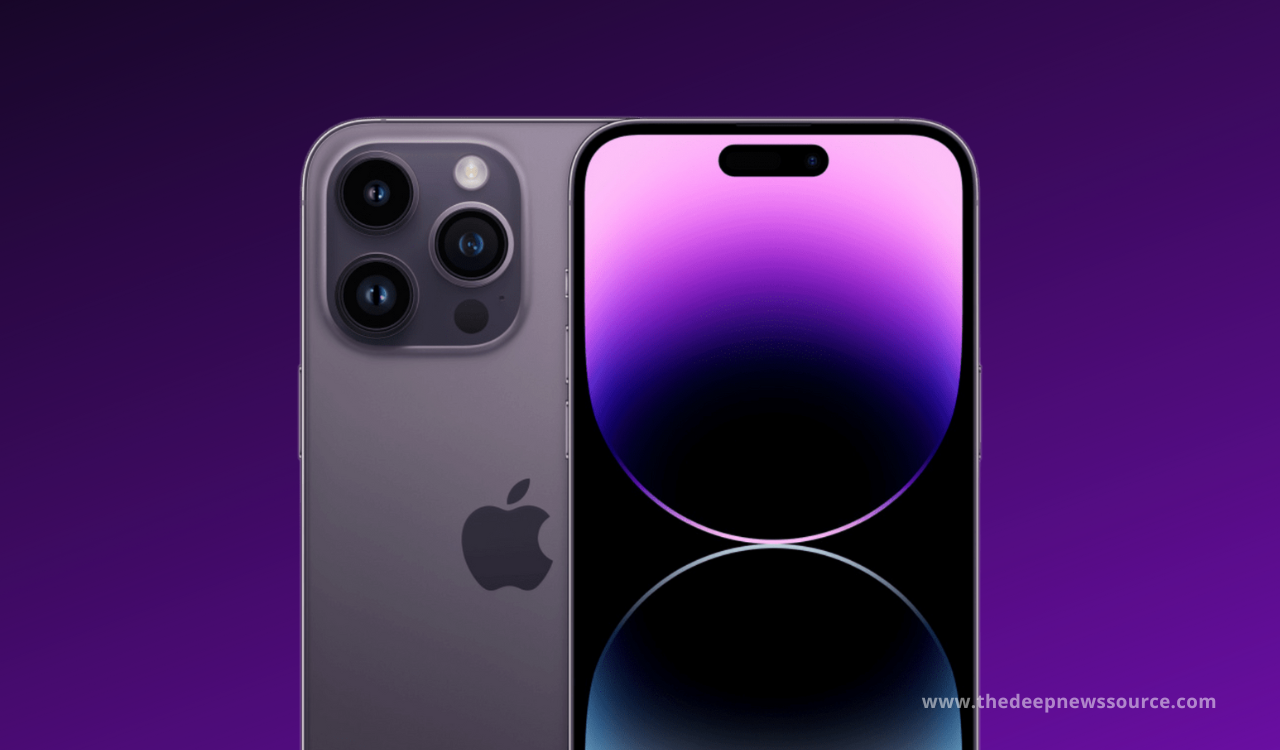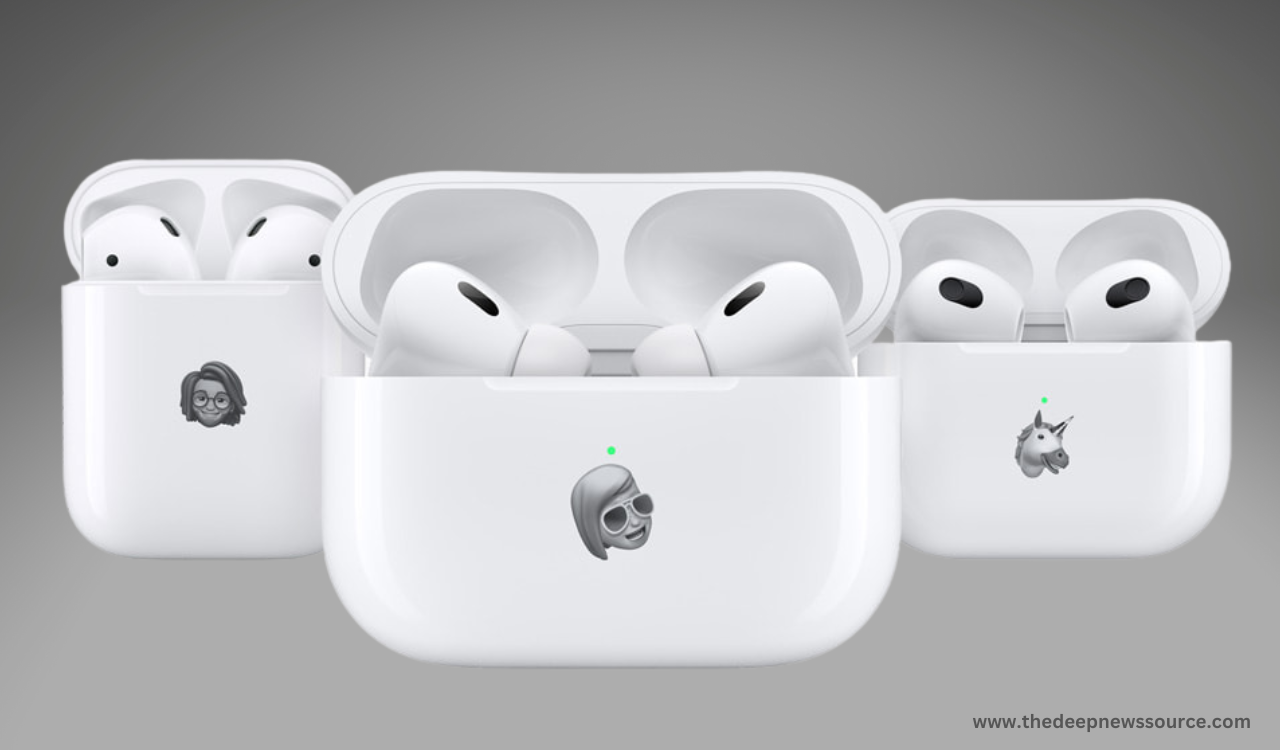Apple
Apple AirPods 3 wireless earphones require iOS 13 and above to support older iPhone 5s/6/6 Plus devices

Apple announced the launch of the third-generation AirPods, introducing a new Contour design that supports spatial audio, various advanced features, and brings an exceptional experience.
The new AirPods combine Apple’s optimized acoustic system and the powerful performance of the H1 chip, using computational audio technology to achieve adaptive parity, and bring a breakthrough listening experience. AirPods that support dynamic head tracking are paired with a variety of Apple devices, allowing users to enjoy spatial audio in Apple Music that supports Dolby Atmos and other types of movies and TV shows. The new AirPods are sweat and water-resistant and come equipped with a force sensor for convenient and intuitive control of music and calls. The extended battery life provides up to 6 hours of listening time, and you can enjoy up to 30 hours of listening time using the portable charging case.
We are informed that AirPods (3rd generation) has officially joined the world-famous Apple headset product line. They will be available for order today, priced at 1,399 Yuan, and will be available in retail stores from October 26 (Tuesday).

According to MacRumors, the new AirPods 3 dropped support for the older iPhone, iPad, and iPod touch that were previously supported by AirPods 2.
According to Apple’s new AirPods 3 specifications page, AirPods 3 doesn’t support the iPhone 6, iPhone 6 Plus, and iPhone 5s. They also dropped support for the iPad mini 2 and iPad mini 3 and the sixth-generation iPod touch. Apple explained the reason in the footnote for the new AirPods, saying that some functions require iOS 13 and above, but none of the above devices support it.

To create a more refined appearance, the new AirPods use smaller headphone handles than the previous generation and use the same force sensor as the AirPods Pro to control media content, according to Apple’s official introduction. The new AirPods earplugs and charging case are sweat and water-resistant, and the waterproof level can reach IPX4.
The AirPods (3rd Generation) inherited the consistently excellent sound quality of the AirPods, using custom-built drive units and high dynamic range amplifiers, offering a deep bass while bringing a pure and clear treble. Acoustic mesh is attached to the microphone to reduce wind noise and make the human voice clear during calls. AirPods’ exceptional voice codec, AAC-ELD, supports the device’s Full HD voice call quality and brings clear and natural call effects to FaceTime calls.

The new AirPods use computational audio technology to bring a breakthrough experience, making the popular features on the AirPods Pro and AirPods Max, such as adaptive equalization, spatial audio supporting dynamic head tracking, and more, now available to more users.
To bring an immersive and customized listening experience, the new AirPods use adaptive equalization technology, which can adjust sound effects in real time according to the fit of the AirPods and the user’s ears. The introverted microphone will detect sound in-ear, and then use adaptive equalization technology based on audio calculated for low and medium audio that is lost due to the different fit.
Spatial audio can deliver a cinema-like three-dimensional experience that fills every corner of the space with sound, based on Dolby Atmos, giving AirPods an unprecedented sound. Dynamic head tracking function allows users to enjoy this level of rich audio-visual experience, whether listening to music or watching videos, it makes people feel more immersive. By using advanced spatial audio algorithms to fine-tune the frequency received by each ear, as well as directional audio filters, AirPods can immerse users.
AirPods (3rd generation) offer long battery life, up to 6 hours of listening time and up to 4 hours of talk time. Just 5 minutes of charging can provide AirPods about 1 hour of battery life, and the charging box can provide 4 additional charges, giving users up to 30 hours of total listening time. AirPods are now also part of the MagSafe ecosystem for convenient wireless charging.
Apple recommends that use of AirPods requires Apple devices running iOS 15.1, iPadOS 15.1, watchOS 8.1, tvOS 15.1 or macOS Monterey. The above systems will be released next week as a free software update
Apple
Google makes fun of Apple for adopting outdated smartphone technology
Recently, Google held a launch conference to introduce its Pixel collection devices such as the Pixel 7 series and Pixel Watch. During the press conference, the company mentioned Apple, iPhone 14, iOS 16, and the RCS message support that Apple was hesitant to adopt. Furthermore, Google couldn’t help but criticize Apple’s attitude toward innovation.
“Pixel has always been a leader in smartphone innovation,” said Brian Rakovsky, Google’s VP of Product Management. “We see it as an admiration when others in the industry follow our example, like ‘AOD’ And ‘At a Glance’ to put useful information directly on the lock screen.” He was referring to new features in iOS 16 and the iPhone 14 Pro.
“Three years ago, we launched the crash detection system, along with other features like safety checks and emergency sharing,” Rakovsky said at the launch. Last month, Apple introduced crash detection, the iPhone 14 Pro, And the latest Apple Watch, iOS 16 can bring more security features to users. “This is a groundbreaking feature record for the Pixel’s first launch,” he concluded.

One of the most contentious issues between Apple and Google right now is Apple’s refusal to support RCS messaging. Despite Google’s public call for Apple to adopt RCS, Apple continues to limit itself to the SMS standard and iMessage, just as it has for years with Type-C. According to Report Tim Cook previously responded, “This is not what Apple users ask the company to do.”
At last night’s Google event, it pressured Apple again to change course. “RCS is the modern industry standard for messaging and it has been adopted by most industries. We want every device manufacturer to understand this and adopt RCS to make texting better for every smartphone user.”
For the more latest news, you can follow us On!
1. Telegram.
2. Google News.
3. Twitter.
Apple
Apple rolling out the new beta update for the AirPods 2/Pro/Max

Apple has started rolling out the new firmware update for the AirPods 2, AirPods 3, AirPods Pro, AirPods Pro 2, and AirPods Max. The latest update comes in beta form and it bumps with the new build number 5B5040c.
Since WWDC in June, Apple has been providing beta firmware updates for AirPods. The beta firmware requires an iPhone running iOS 16, a Mac running macOS Ventura beta, Xcode 14, and suitable AirPods to install.
We discovered that developers must pair the AirPods with the iPhone, connect the iPhone to the Mac via a Lightning cable, launch the Xcode 14 beta on the Mac, and select the pre-release beta firmware under “Settings – Developer – AirPods Testing.”
Apple hasn’t released any information about the new firmware update for the AirPods, so we don’t know what improvements or bug fixes are included. Users can also check the firmware of their AirPods or AirPods Pro by following these steps:
How to check the new firmware update for the AirPods?
- Connect AirPods or AirPods Pro to your iOS device
- Open the Settings app
- Select general
- Select About
- Select AirPods
- Check the number next to “Firmware Version.
For the more latest news, you can follow us On!
1. Telegram.
2. Google News.
3. Twitter.
Apple
Report: iPhone 14 parts price is 20% higher than the iPhone 13

A dismantling report from Japan, according to Juheng.com, shows that the total price of parts for Apple’s iPhone 14 series flagship models is about 20% higher than that of the iPhone 13.
According to Fomalhaut, the total cost of parts for the iPhone 14 Pro Max is approximately $501 (approximately 41,495 INR), which is more than $60 (approximately 4970 INR) higher than the previous generation iPhone 13 Pro Max.
Since the launch of the iPhone “Max” flagship model in 2018, the cost price has fallen between US$400 (about 33,130 INR) and US$450 (about 37, 271INR). This time it has directly raised more than US$60, and the cost of parts and Parts totals both saw their biggest gains since 2018.
In terms of model pricing, the iPhone 14 Pro Max with the smallest capacity is priced at the same US market price as the same model in 2018 and remains at $1,099 (about 91,024INR). The rise in component prices was not directly passed on and became the main reason for squeezing profits.
According to the report, the cost increase of the iPhone 14 Pro series is primarily due to the A16 Bionic chip. The chip costs $110 (approximately 9,110INR), which is more than 2.4 times the price of the A15 chip found in last year’s iPhone 13 Pro Max. The A16 Bionic employs the most advanced 4nm process, which is currently only available from TSMC and Samsung Electronics.

For the latest news, join us on our telegram channel: link below
 We learned that Fomalhaut said that this highlights Apple’s product strategy that “it cannot be separated by new features, but has to use high-performance configuration to make a distinction”.
We learned that Fomalhaut said that this highlights Apple’s product strategy that “it cannot be separated by new features, but has to use high-performance configuration to make a distinction”.
In terms of other parts, the CMOS used in the iPhone 14 comes from Sony. Among the three cameras on the rear of the iPhone 14 Pro, the size of the CMOS used in the main camera is 30% larger than before, and the price is also about 50% higher at $15 (about 1242INR). Due to the adoption of the new CMOS, the main camera of the iPhone 14 Pro series has increased to 48 million pixels.
The OLED panel of the dismantled model adopts Samsung electronic products; the baseband chip is from Qualcomm, and the power management chip (PMIC) is Apple’s own product. In 2018, Apple acquired the power management chip business of British chip maker Dialog for $600 million.
Furthermore, the report stated that the United States accounted for 32.4% of the total parts of the iPhone 14 Pro Max, South Korea accounted for 24.8%, Japan accounted for 10.9%, Taiwan accounted for 7.2%, mainland China accounted for 3.8%, and others (unknown) accounted for 20.9%.
Last year, the United States accounted for 22.6% of the total parts of the iPhone 13 Pro Max, South Korea accounted for 30.4%, Japan accounted for 14.5%, Taiwan accounted for 8.4%, mainland China accounted for 4.5%, and others (unknown) accounted for 19.6%.
For the more latest news, you can follow us on!
1. Telegram.
2. Google News.
3. Twitter.







